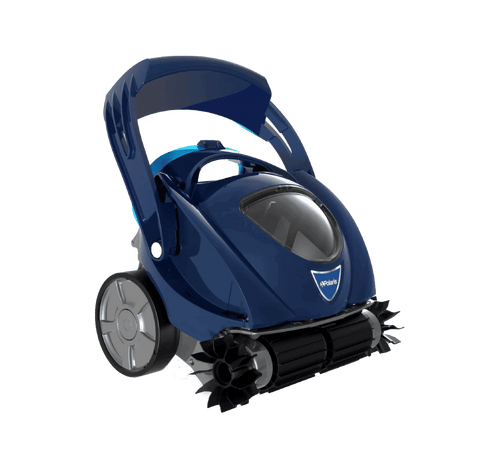It would be closer to a perfect world if your swimming pool could close itself down for the season, but unfortunately for pool owners that’s not the case.
To make sure your pool is closed down properly for the Canadian winter months ahead there are several procedures you should follow. If you take heed of the tips below you should be able to save some money along the way and find your pool will be easier to open in the spring.
1- Don’t close the pool too early
The reason you don’t want to close the pool too early in the swimming season is because algae has a hard time growing in water that’s 18 degress Celcius. If you close the pool while the water’s above this temperature, you could help promote algae growth. This means you’ll have to work harder and add more chemicals when opening the pool. In fact you don’t really need to close the pool according to the calendar as it’s better to close it depending on the weather. You may find summer weather comes early or lasts late some years.
2-Remove accessories
Don’t forget to take out any type of pool accessory first, such as slides, diving boards, toys, ladders, steps, and ropes etc. In addition, be sure to confirm that your safety cover is in good condition and isn’t in need of repair. If you find holes in the cover you should take the time to patch them up.
3-Don’t drain the pool
You need to leave the right amount of water in the pool during the winter months to support the structure and the safety cover. The amount of water remaining in the pool will also depend on the type of cover you use. Remember, a mesh cover will allow water to seep into the pool when the ice and snow melts. It’s a good idea to consult a professional pool outlet to inquire about the amount of water to leave in the pool.
4-Add algaecide and chlorine shock on different days
If you add algaecide to the pool water and then follow it up by adding chlorine shock, the algaecide will basically be rendered ineffective by the high level of chlorine. It’s a good idea to shock the water a few days before closing the pool and then adding the algaecide the day you shut it down and cover it.
5-Treat metal and algae problems
It’s recommended that you treat the water for algae problems before covering the pool and the same goes for any type of metal that has been sitting in the water all summer. Metal can often stain and it may be quite hard to remove them. In some extreme cases, the stains will be impossible to get rid of. If you have algae in the pool when closing it, there’s a good chance it’ll be worse when you open it if you don’t treat the water properly.
6- Prepare the water
You don’t want to find bacteria, algae, and organic staining swarming all over the pool when you open it, so be sure to prepare the water properly for the winter. You should make sure the balance is right by adjusting the alkalinity level, ph, and chlorine a few days before covering it up. It’s a good idea to shock the water a couple of days later and then add winter algaecide the day of or day before closing and let it circulate.
7-Drain all equipment
It’s recommended that your chlorinator, filter, pump, and heater are all properly drained in climates that reach freezing temperatures during the winter months. If the water isn’t drained or blown out it could freeze in the equipment or lines and crack. Your cartridge filters and D.E. filter grids should be taken out and cleaned before storing them if possible. In addition, if you have the room to store equipment indoors during the winter it’s a good idea to do so.
8-Winterize the plumbing
With inground pools, the lines from the skimmer should be blown out and then plugged at the pool. If you aren’t able to blow the lines out you may want to add some swimming pool antifreeze to the lines. With aboveground pools, you generally just need to disconnect all hoses that lead to the filter and pump and back and place expansion plugs in the outlets of the pool walls.
9-Keep the filter running until closing day
Even if your pool isn’t being used, it’s a good idea to keep the filter running until you close it for the winter as it will help circulate the water and chemicals to keep it clean and properly balanced. You can also keep running your automatic or robotic cleaner at the same time to help fight debris from gathering at the bottom of the pool.
10-Ask for help when needed
If you’re not exactly sure what you’re doing when closing a swimming pool, don’t be too shy to ask for help from a professional pool company. It may cost a few dollars now, but you could save a great deal in the long run. This is especially true for first-time pool owners. A simple mistake when winterizing the pool could prove to be a bank-buster a few months later. If you decide to hire the services of a pool professional, be sure to ask them any questions you can think of to help you in the future. They’ll be glad to give you tips and show you how to close the pool on your own the next year.
Have a question about closing your swimming pool properly for an easy opening in the spring? Contact us today, we have locations throughout Ontario and our pool experts can help you get your pool closed safely and effectively.


